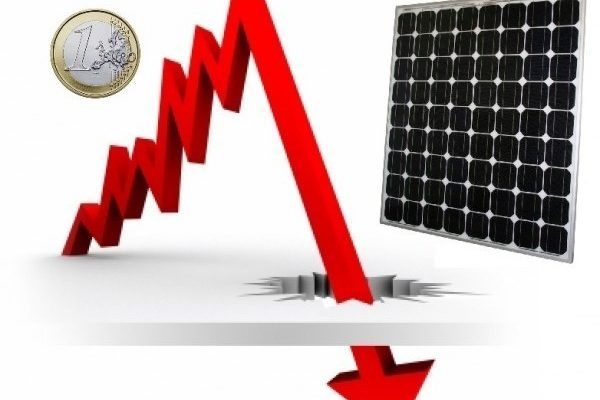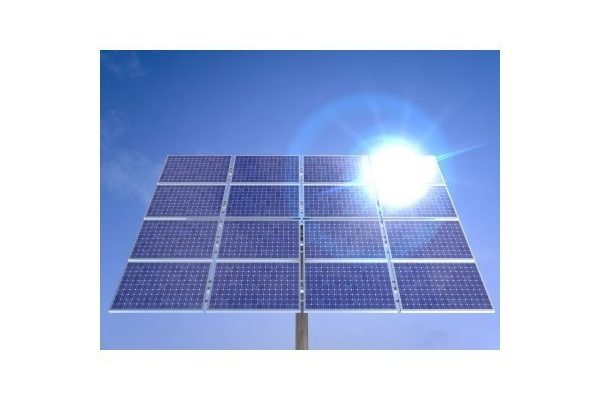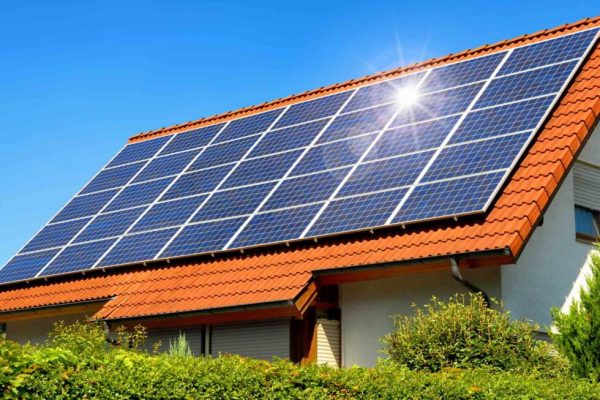2014 closed with 177 GW of photovoltaic power installed worldwide. This year alone 38.7 GW were installed, confirming the trend of unstoppable growth in the last 10 years.
To give us an idea, 38.7 GW is more than 120 million photovoltaic solar panels installed only in 2014. More than 300,000 photovoltaic panels are installed every day in the world and the trend is exponential growth in the coming years.
And what happens in Spain?
It seems incredible that just seven years ago Spain was number one worldwide in this sector.
Briefly recap the history of the last 10 years of the sector in Spain. Just enough to see how it has evolved photovoltaic power installed in Spain:
Let’s make a little history to understand this chart.
In the late nineties and early 2000s, no technology of the use of renewable energy was cheap enough by itself to compete with traditional energy sources (hydroelectric, nuclear and fossil fuels), so seeing the enormous social benefits these energies could offer, we chose to subsidize to encourage their development and to enable them to compete with other energies.
November 27, 1997, 14 days before the signing of the Kyoto Protocol and three years before the EU guidelines oriented aid for renewable energy were published in Spain has already approved a Law on the Electricity Sector 54 / 1997 which reflected how they should financially reward Renewable Energy. It was a pioneer in this field norm.
At the European level was put aim to reduce, by 2020, 20% of gas emissions in the EU achieve the 20% increase in energy efficiency and 20% of primary energy consumption from renewable sources (based base year 1990, is called Objective 20-20-20).
Specifically, for photovoltaics, it was expected to develop by 2010 an installed capacity of 3 GW in capacity throughout the European Union. In this first phase of development of renewable policy, the European Union, reflecting the general view of the time, I thought that photovoltaics would address only small installations in ceilings. There was talk that the 3 GW target would be achieved through the development of 1,000,000 photovoltaic systems, which have an average size of 3 kW (only a few panels as a small solar kit).
Simultaneously in Spain the first legislation to support renewable energies especially favored the development of other technologies such as cogeneration (such as the use of high efficiency) and wind energy, starting to populate our fields with large wind turbines. Instead, the PV in these early years was limited to small installations on roofs. Although the returns were attractive for the high level of subsidy, then very few people dared to install a rooftop solar kit.
The first rule containing specific support for solar PV was the RD 436/2004. Legislation enacted in March 2004 allowing the start of the PV plant installations in Spain.
At the time the Directive 2001/77 / EC adopted to introduce energy consumption from renewable sources by 2010 12% of the energy consumed in the EU, in response to the Kyoto Protocol and following the line initiated in 1997. 2007 EU, in its communication of January 10, felt that the objective of a renewable deployment that would allow 12% of consumption came from these sources would not be achieved and urged EU countries to greater effort to develop renewable resources.
The result of this incentive, and also due to the obsolescence of the previous method (which set a premium based on the market price rose paradoxically primate introducing energy into it, feeding a price increase senseless) was approved in Spain the famous RD 661/2007, which set an especially generous tariff for photovoltaic systems.
An amazing coincidence of situations, including:
- credit facility,
- availability of panels (Spain attracted 50% of global production of solar panels in one year)
- a much higher than expected performance of the systems (that caused the premiums to be given returns more attractive)
- the bursting of the housing bubble that led to credit and labor to the sector,
- a less developed regulatory structure that made the big farms can take advantage of the higher premium reserved for small installations,
- the fact that there were no limits to the installation. Although there was a goal (which was exceeded by almost 1000%), after completing a percentage of the target facility it was given one year to install everything you wanted to allow in practice that there was more limited time.
This resulted in what we see in the chart, in 2008 there were more power installed in Spain than in any other country in such a short time.
Many authors say that in that year the PV was mature and grew from a small off-grid resource to a workable possibility of generating electricity on a large scale.
Installation finished the race in Spain in September 2008, when was the deadline for entry in the RD 661/2007. The following rule tried to correct previous errors not fall back into an unsustainable development of the sector. The RD 1578/2008 quarterly quotas set about power, so easily seen in the graph in the following years the increase was entirely linear.
Until renewable moratorium was introduced in 2012, for which no one else would be installed kW charging premium since.
The reason for this was the measures taken to cut the tariff deficit in the electricity sector. Including spending limit for renewable energies FITs, lowering the ones already given and not allowing it to have more renewable power connected.
So far the story of what happened but, what is the situation now?
On the one hand, solar photovoltaic technology has developed so much that its costs are already competitive with conventional energy. The era of premiums is over forever.
So, if you are already competitive without raw why they are not riding many solar installations? What happens in other countries?
As it happens in other countries what is not happening in Spain, and the installation of photovoltaic solar energy is favored not raw, but with regulatory mechanisms for its implementation. And not because they are more pro-renewable conviction, rather because they have realized the benefits to society reversed. USA, its history, it cannot be considered renewable energy lover by ideology, however, they have realized that solar energy provides more jobs than any other generating technology, and without increased cost. Besides, among many other advantages, to create local employment, reduce overhead electricity networks, save costs on payment of CO2 emissions, allowing the development of industry in the long term, meet targets for reducing emissions and pollution …
And how do you favor? As with tax credits, which allow deduction of investments in renewable energies from taxation, legislation systems for example the net balance, allowing injecting energy into the grid when someone produces more energy than he consumes accounting this energy for the energy bill, handling facilities, etc. etc. etc.
What about Spain? Exactly the opposite. With the excuse that if we self-consume energy does not contribute to the electrical system (especially to pay its debts), because we consume traditional energy with traditional payments, the government took over two years a draft rules of consumption. Properly filtered to fear anyone who wanted to install its solar kit, it includes regulations on the famous “peaje de respaldo”.
The toll is a revolutionary backup electricity tax that we generate ourselves, that is, as the energy that we generate not consume network, we have to help pay for it as if we had spent on the network. So we help pay the debts of a poorly managed electrical system, which we believe consumers debts, but utilities outrageous profits.
So they have achieved for two years that the market is paralyzed, but with the current legislation it has to be said that self-consume energy is 100% legal without paying any toll.





